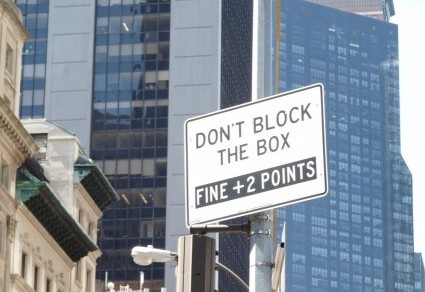Although I often mock the signs I see around NYC, this one has me well and truly stumped. I chanced upon it in a hardware store near Lincoln Center, posted atop a gleaming, stainless steel box that would never fit into any Manhattan kitchen I’ve ever seen. It seems to promise something, but what? Take a look. Maybe you can figure it out.

W/ what?
I get that the abbreviation “w/” stands for “with.” After that, I’m clueless. I should have taken advantage of the offer to “ask associate for details,” but I was late for lunch and the display model, contrary to its advertised “w/ Food,” contained nothing edible. So I left, perplexed and full of questions. Does “w/ Food” mean it’s filled up once, on delivery, or always – a kind of cornucopia that magically refills itself? That last option might be worth the hefty price. But who chooses the food? And are we talking macadamia nuts and lobster or lentils and frozen peas?
This sign, I ultimately decided, is part of a trend. Throw meaningless words at shoppers and hope that they’ll be impressed and confused enough to buy what you’re marketing, even though they haven’t the vaguest idea what that is. Kind of like the current US presidential race.
So over to you, readers. Think of this blog post as a contest, like the weekly cartoon-caption challenge in The New Yorker. The prize for the best interpretation of “w/ Food” is, well, nothing.
Yes, I’m cheap. But I’m also honest and clear. Unlike this sign.
















